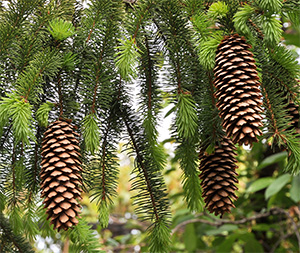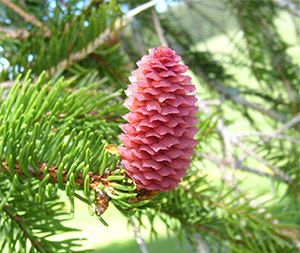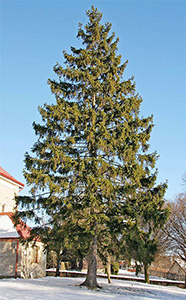Picea abies


Other common names
German: Gemeine ficte. French: Epicea commun
Origin of the species name
Picea is Latin for spruce; abies is Latin for fir, referring to its similarity to firs.
Family
Pinaceae
Date planted
August 2009
Lifespan
Trees of this species can live for 250 years, with some living much longer.

General description
This is a large, evergreen, coniferous tree with a conical crown. The bark is orange-brown, and the branches short and stout. The lower branches are horizontal and the branchlets are drooping. It has sharp-pointed, stiff needles that are a shiny deep green. The mature brown cones are cylindrical and hang from the branchlets. Height 25m Spread 10m.
Natural distribution and habitat
The species is native throughout northeast Europe, in the mountains of central Europe and to the extreme north of Greece and eastwards to the Ural Mountains It is widespread and frequent across Europe, occurring in pure stands or with other conifers or deciduous trees and tolerating wetter and cold montane sites well.
Conservation status
Being very widespread, it is not regarded as a threatened species.
Planting pattern
Planted in a chevron or herringbone pattern along the contours.
Uses
It is a timber tree of major economic importance throughout the cool temperate areas of Europe. The wood is used for pulpwood as well as for construction, furniture and musical instruments (including the Stradivarius violins). It is also one of the most common species used for Christmas trees in Britain. A herbal tea can be made from the leafy twigs and is reputed to have various curative powers.
Further reading
Farjon, A (2010) A Handbook of the World's Conifers. Brill.
